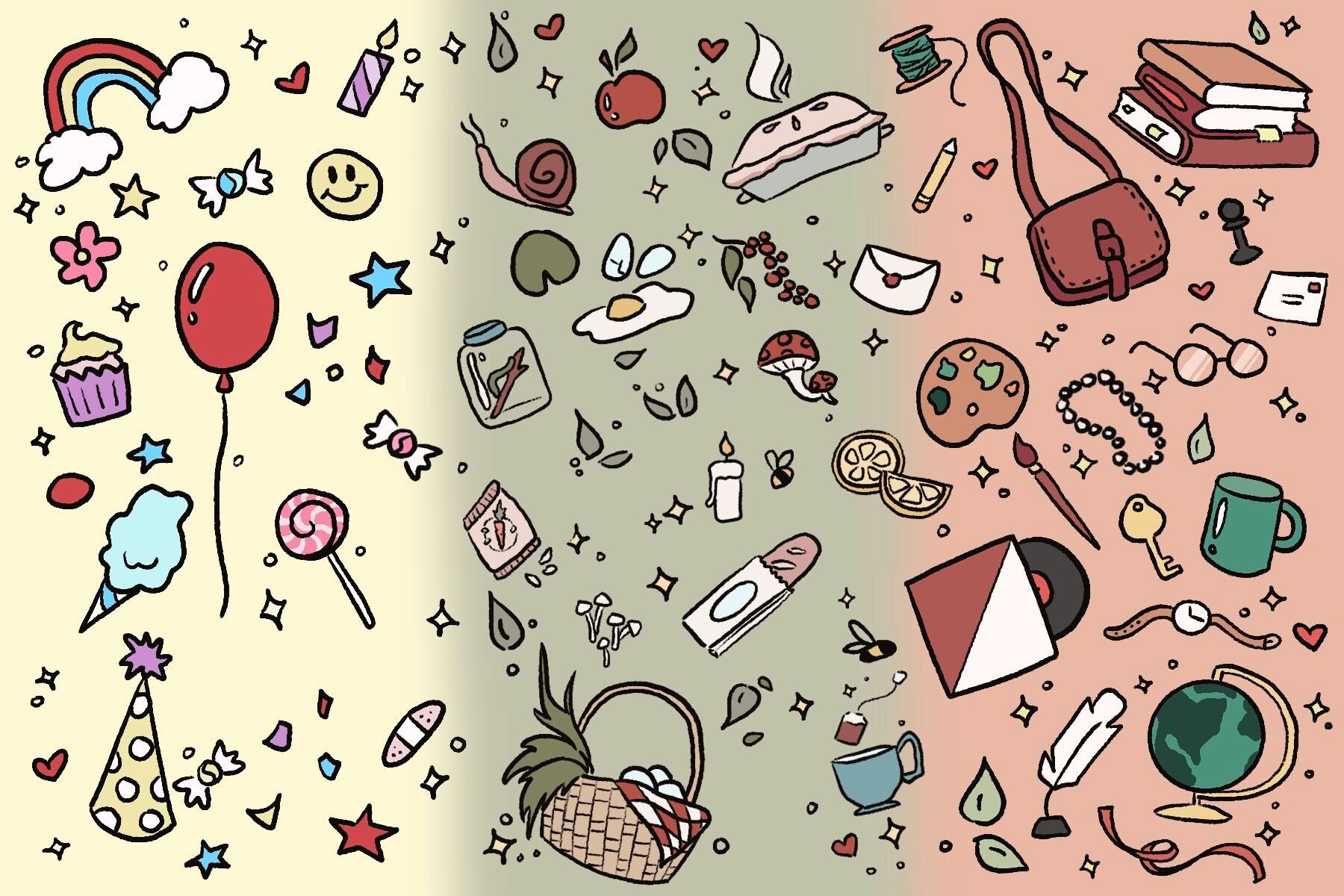Considering something to be aesthetically pleasing is by no means a novel concept. The term “aesthetic” was popularized in the 18th century by philosophers during the British Enlightenment, and it has its roots in the Greek language. Even today, however, the word is still associated with the nature of beauty and why individuals find certain things appealing. In recent years, social media has popularized the presentation of different aesthetic categories with the suffix “-core.”
The word “core” is considered to be the most central, vital component of something, and likewise, aesthetics like cottagecore or nostalgiacore have themes like cottage-style living or nostalgic childhood items, respectively, as the core of their aesthetic category. People have always been obsessed with having an aesthetic, be it the goth aesthetic that prevailed pre-2000s or the dark academia aesthetic that holds vast popularity today.
Visiting social media sites like Twitter, Instagram and TikTok will invariably lead to the infiltration of aesthetics on users’ feeds. As a result, hundreds of new aesthetic types have emerged. Within the last year, “clean girl” aesthetics, “teenage dirtbag” aesthetics and so many more have been developed and fine-tuned. Other examples include e-girl, indie or indiecore, cybercore, glitchcore and spacecore, and all of them tend to revolve around specific images, colors, styles and themes.
-Core: Harmful or Helpful?
With all social media trends, one must consider whether engaging with them would be healthy or damaging, and aesthetics are no different. On one hand, having the ability to adopt interesting and enjoyable labels can be incredibly beneficial to personal growth and happiness. Labels for gender, sexuality and other identities allow for interpersonal connections, and labels for a central theme of beauty or visual appeal can help to do the same. Many communities have formed around aesthetic labels, such as early punk scenes and emo culture.
However, it’s worth contemplating whether the emergence of so many labels at once is good, as people often incorporate them into their core beliefs and personality. Various communities online have had to confront the question of harmful -core aesthetics, including why they are harmful and how the adoption of certain aesthetics is becoming a toxic social force. For example, some people now force themselves to fit into the specific criteria of a core aesthetic and try to make it their entire identity.
In her video “the problem with aesthetics,” Ariel Mckenna says that the word aesthetic has been applied to so many things that it’s lost its meaning. She also states that one issue with aesthetics is their potential to limit the spectrum of personal expression. This is something easy to stumble across on platforms like TikTok and Instagram, where people perceive aesthetics as not just a taste, but a goal to achieve. It’s difficult to conform to an idealized notion of beauty, and it seems as though people are forgetting — at an alarming rate — that humans aren’t meant to have one specific aesthetic that extends into every aspect of their lives. Rather, having multiple aesthetic tastes, as well as elements that aren’t even aesthetic, is a much healthier approach.
Beyond the confining element of -core aestheticism, the online aesthetic community has also shown increasingly strong levels of exclusion. Mckenna touched on this in her video, noting that Pinterest aesthetics generally leave people of color out of their photography, as well as overweight people or anyone who doesn’t fit the stereotypical model of a skinny, pale female. Gelsey Blythe describes how the aesthetic community instigates exclusion in her video “Aesthetics and the Lack of Inclusivity: The Problems with Cottagecore, Dark Academia, and Aesthetics.” Specifically, Blythe mentions how things like the Eurocentrism of academia and categories like dark academia, light academia, chaotic academia, etc., perpetuate a stereotype of white, upper-class males dominating the aesthetic. Though the acts aren’t necessarily insidious or intentional, many posts online say things like “dark academia is a male aesthetic” and “cottagecore is a female aesthetic,” which contributes to an environment of subtle sexism and othering.
Furthermore, -core aesthetics have become increasingly insensitive trends that harm different communities. One such example is the “povertycore” trend of 2020. The trend glamorized poor lifestyles like struggle meals, subpar housing and old, worn-down clothes. As some have pointed out, the povertycore trend was only an aesthetic for people who were privileged and could afford to make something like extreme poverty look glamorous. While such trends can draw attention to the awful state many live in, povertycore participants displayed poverty as an aesthetic instead of the crippling reality it is. Other, more popular aesthetics like cottagecore are similarly problematic. Cottagecore finds its origins in the aesthetics of colonialism and similar themes, for instance.
Implications, Solutions and Moving Forward
Bearing in mind both the importance and harmful aspects of the modern conception of aesthetics, a lot of questions need to be considered. For example, if aestheticism can be deemed harmful, what are the solutions? There are a few ways to answer this question. First, considering that -core aesthetics can be harmful when molded into core identities, a potential solution would be to encourage reflection and analysis when viewing social media. TikTok and Instagram make so many things look beautiful, when in reality, they are a mirage of filtering and editing. Additionally, consuming media critically and opening up oneself up to the content of other creators would help to break down the culture of underhanded racism, sexism and colonialism rooted in many aesthetics.
Second, it may be worth considering why certain aesthetics are problematic. With something like povertycore, it’s important to ask why it’s harmful to make poverty pretty and why people would even want to seem poor in the first place. Upon analysis, making poverty an aesthetic can clearly minimize the struggles poor people endure. If poverty seems like a beautiful concept due to its romanticization online, people will begin to believe that those living in poverty should not “complain” or be dismayed about their situation. And regarding colonial cottagecore, working toward decolonizing the aesthetic would be a major step forward.
Third, on a societal level, we need a healthier emphasis on fantasy and creativity. When creative outlets aren’t appreciated, many begin to use themselves as paper dolls to project their creativity onto, which, if done in excess, can lead to negative consequences. Encouraging art, promoting inclusive Pinterest boards or even playing dress-up are incredible ways to nourish creativity without compelling people to feel that their entire identity must be performative.
Also, an emphasis on critical thinking in modern society would be a valuable catalyst for getting people to think about how their actions may harm others. Special consideration should be given if they are making trauma seem beautiful, especially if they haven’t directly experienced the trauma in question. Critical thinking also implies that media must be consumed carefully. If someone notices that what they consume doesn’t include POC voices, LGBTQ+ voices, etc., then they should consider seeking out different content.
Overall, the -core aesthetic is a prevalent form of self-expression that can do multitudes of harm or good depending on how the interest is expressed. A careful, critical outlook on one’s own interests, and thinking about how social media influences those interests, is vital. Everyone deserves to explore what makes them happiest without pressure to conform to a neat, tidy, -core aesthetic.

















